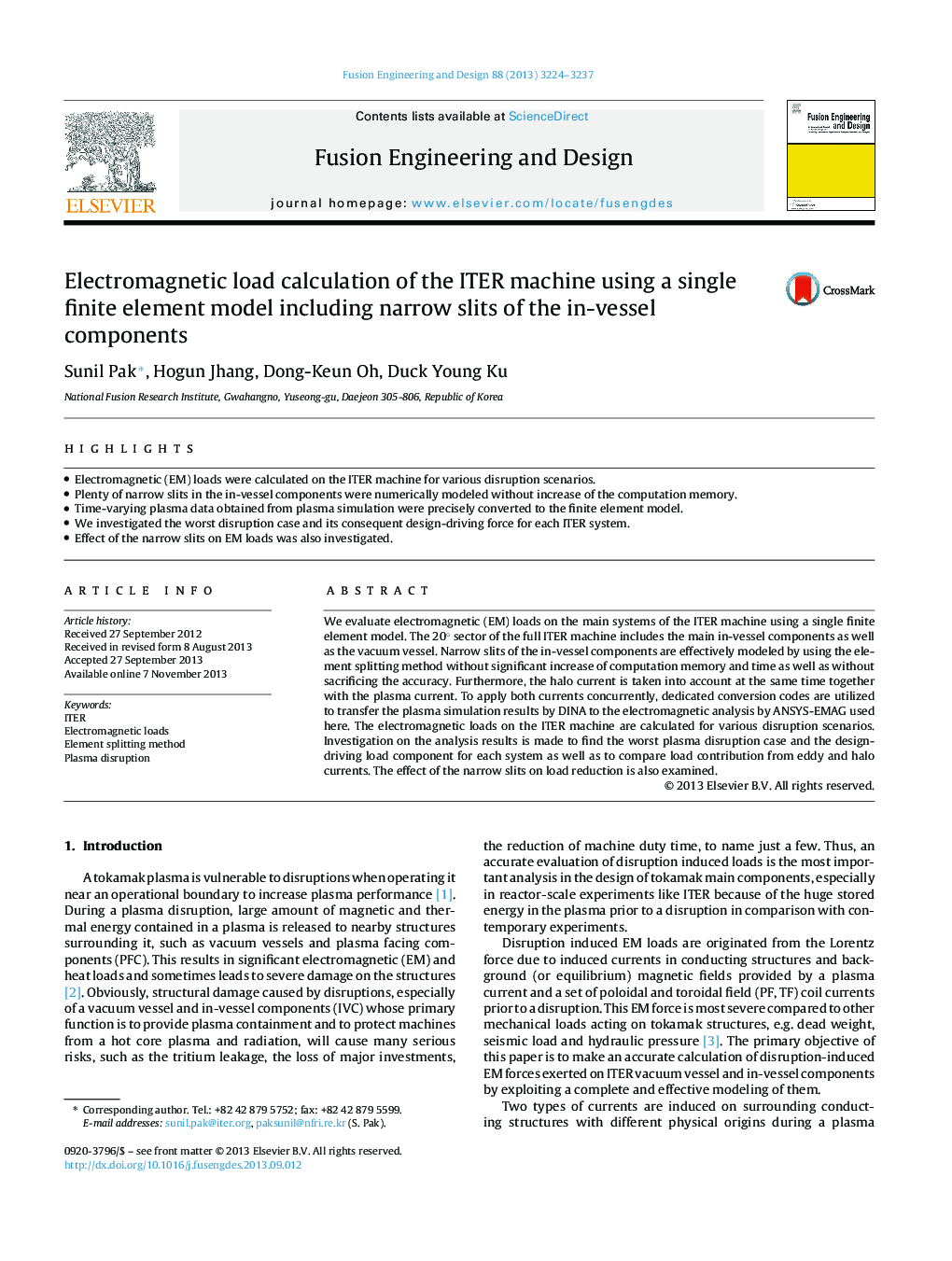| Article ID | Journal | Published Year | Pages | File Type |
|---|---|---|---|---|
| 271136 | Fusion Engineering and Design | 2013 | 14 Pages |
•Electromagnetic (EM) loads were calculated on the ITER machine for various disruption scenarios.•Plenty of narrow slits in the in-vessel components were numerically modeled without increase of the computation memory.•Time-varying plasma data obtained from plasma simulation were precisely converted to the finite element model.•We investigated the worst disruption case and its consequent design-driving force for each ITER system.•Effect of the narrow slits on EM loads was also investigated.
We evaluate electromagnetic (EM) loads on the main systems of the ITER machine using a single finite element model. The 20° sector of the full ITER machine includes the main in-vessel components as well as the vacuum vessel. Narrow slits of the in-vessel components are effectively modeled by using the element splitting method without significant increase of computation memory and time as well as without sacrificing the accuracy. Furthermore, the halo current is taken into account at the same time together with the plasma current. To apply both currents concurrently, dedicated conversion codes are utilized to transfer the plasma simulation results by DINA to the electromagnetic analysis by ANSYS-EMAG used here. The electromagnetic loads on the ITER machine are calculated for various disruption scenarios. Investigation on the analysis results is made to find the worst plasma disruption case and the design-driving load component for each system as well as to compare load contribution from eddy and halo currents. The effect of the narrow slits on load reduction is also examined.
